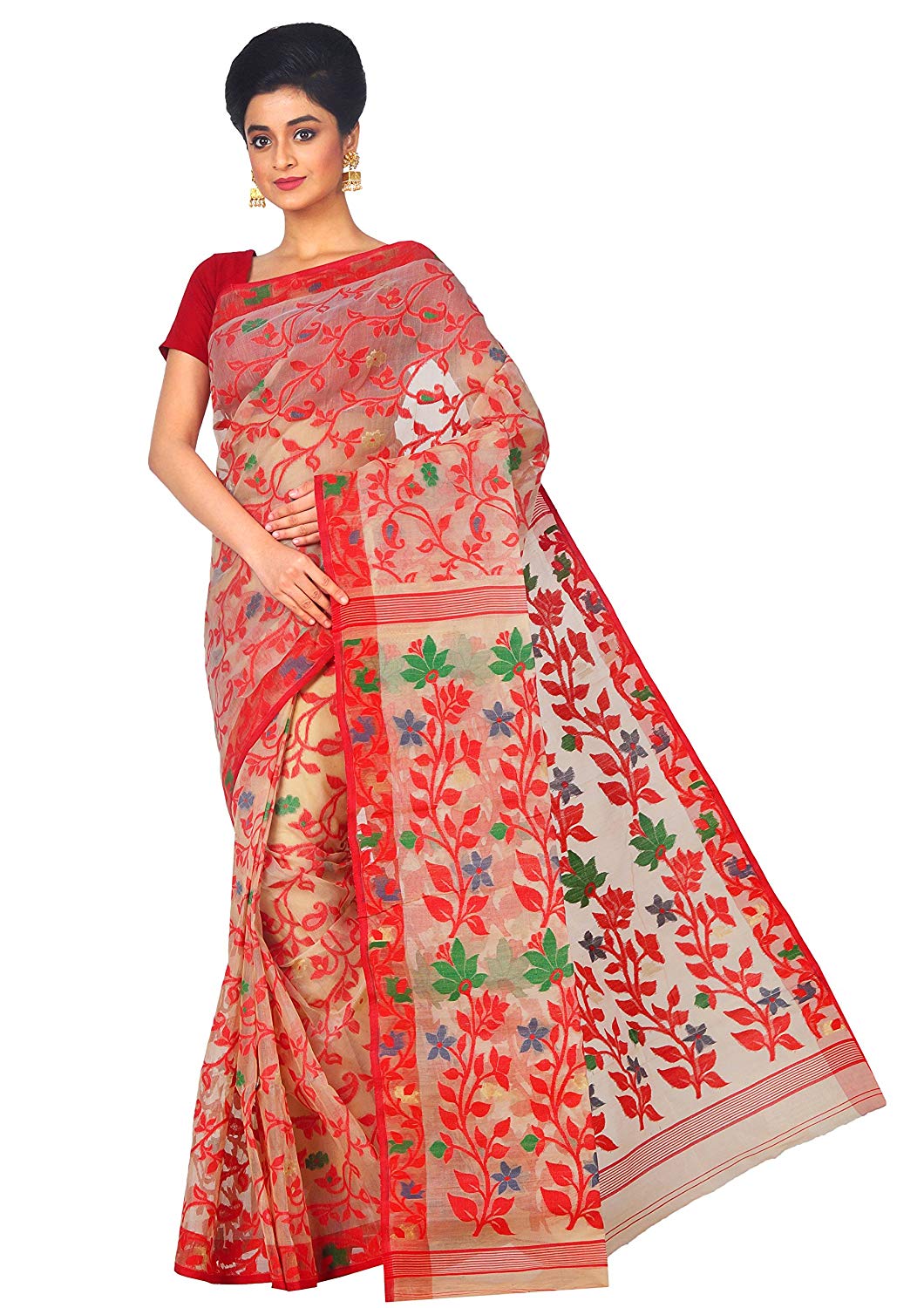Origin: Jamdani sarees originated in Dhaka, Bangladesh, and are also produced in West Bengal, India. The technique of weaving Jamdani is believed to date back to the Mughal era, around the 17th century.
Weaving Technique: Jamdani sarees are handwoven on a traditional wooden loom called a "Tana-Bana" using a supplementary weft technique. This involves adding decorative motifs to the fabric by interlacing the supplementary weft threads with the warp threads in a discontinuous manner, creating intricate and ornate patterns.
Material: Jamdani sarees are usually made from fine cotton or a blend of cotton and silk. The use of high-quality, finely spun yarn results in a lightweight, airy fabric that drapes elegantly.
Designs and Patterns: One of the distinguishing features of Jamdani sarees is their elaborate and intricate designs. Traditional motifs such as flowers, leaves, paisleys, geometric shapes, and scenes from nature are commonly woven into the fabric. These motifs are often inspired by Mughal art and Persian influences. The weaving of Jamdani is so precise that the motifs appear to float on the sheer background of the saree.
Color Palette: Jamdani sarees are available in a wide range of colors, from vibrant hues to subtle pastels. The choice of colors often depends on the occasion and personal preferences. Traditional colors like red, white, black, blue, and gold are commonly used, but modern variations also include trendy shades.
Occasions: Jamdani sarees are prized for their exquisite craftsmanship and are often worn on special occasions such as weddings, festivals, and cultural events. They are considered a symbol of elegance, sophistication, and tradition.
Maintenance: Due to their delicate nature, Jamdani sarees require gentle care during washing and storage. It's recommended to hand wash them with mild detergent and avoid wringing or twisting to maintain their shape and integrity. Storing them in a cool, dry place away from direct sunlight helps preserve their colors and texture.
Overall, Jamdani sarees are revered for their timeless beauty, intricate craftsmanship, and cultural significance, making them a cherished attire for women in South Asia and beyond.




